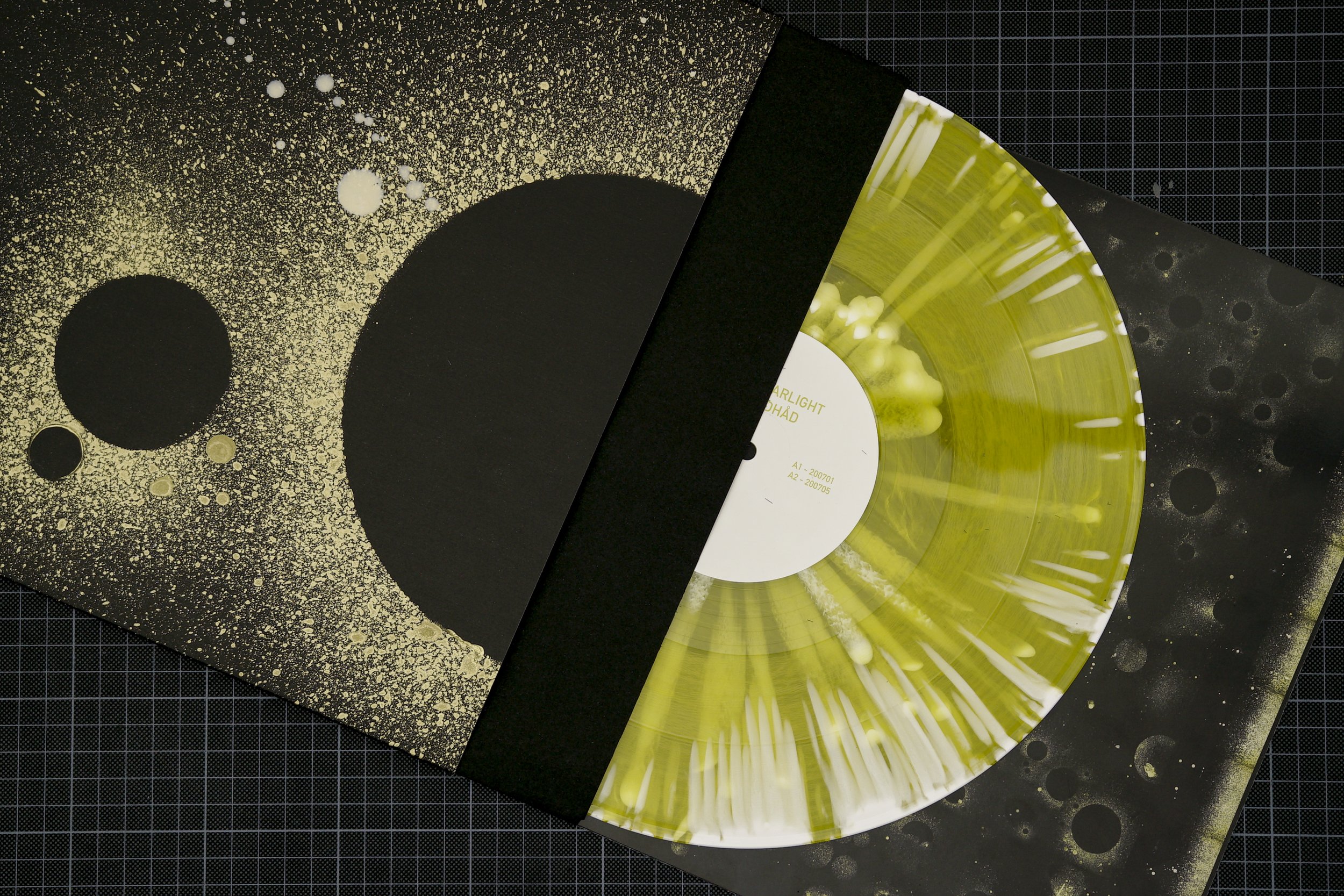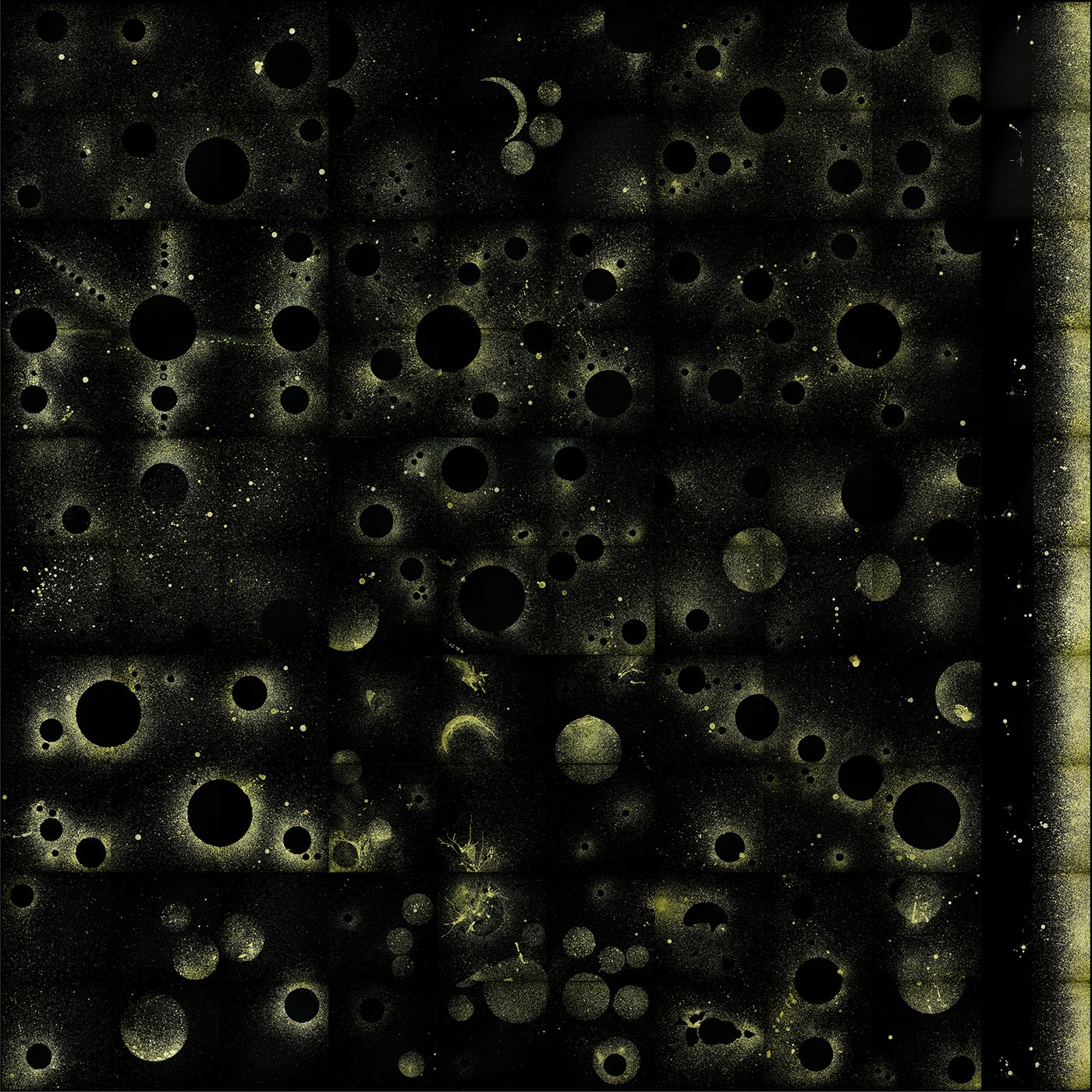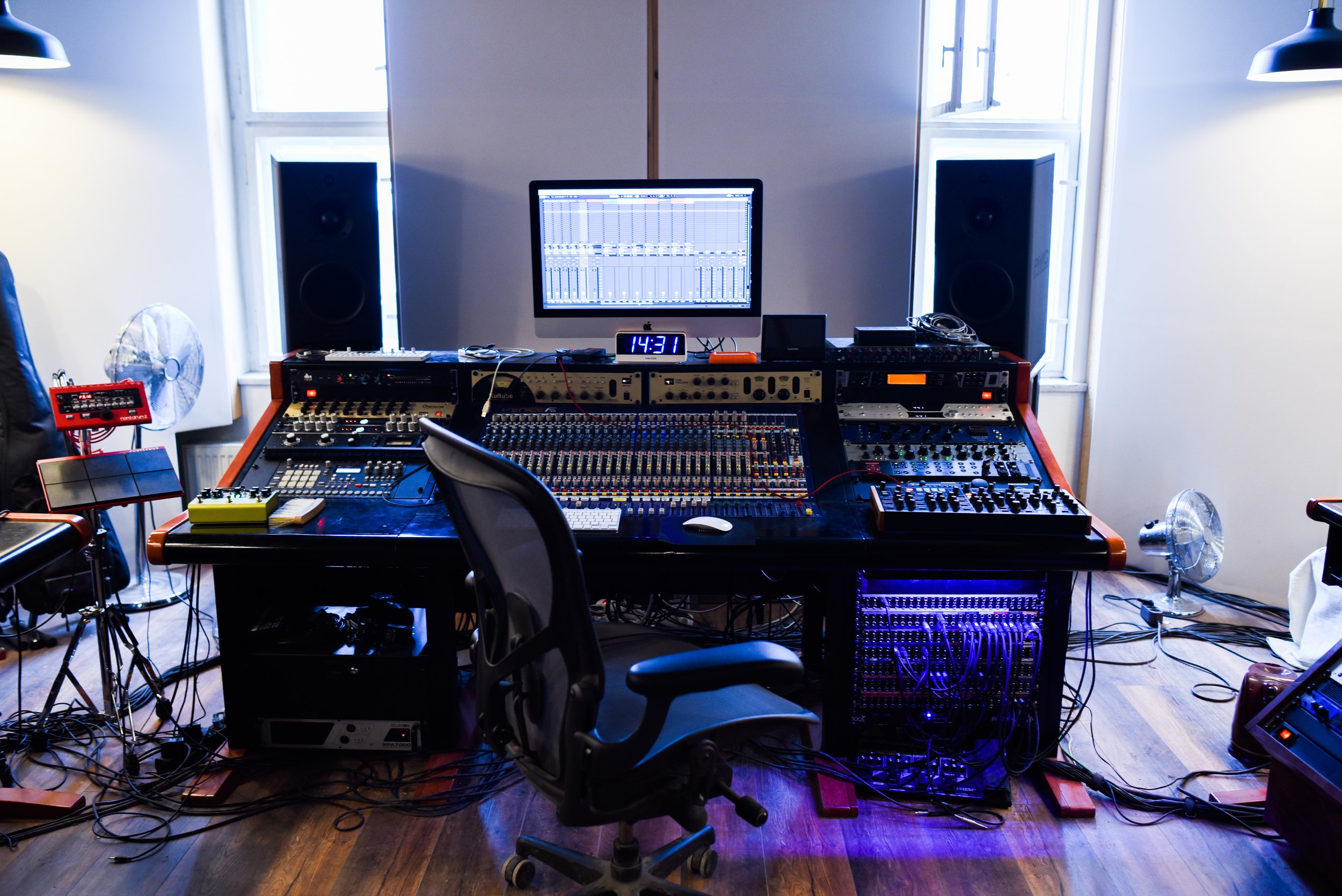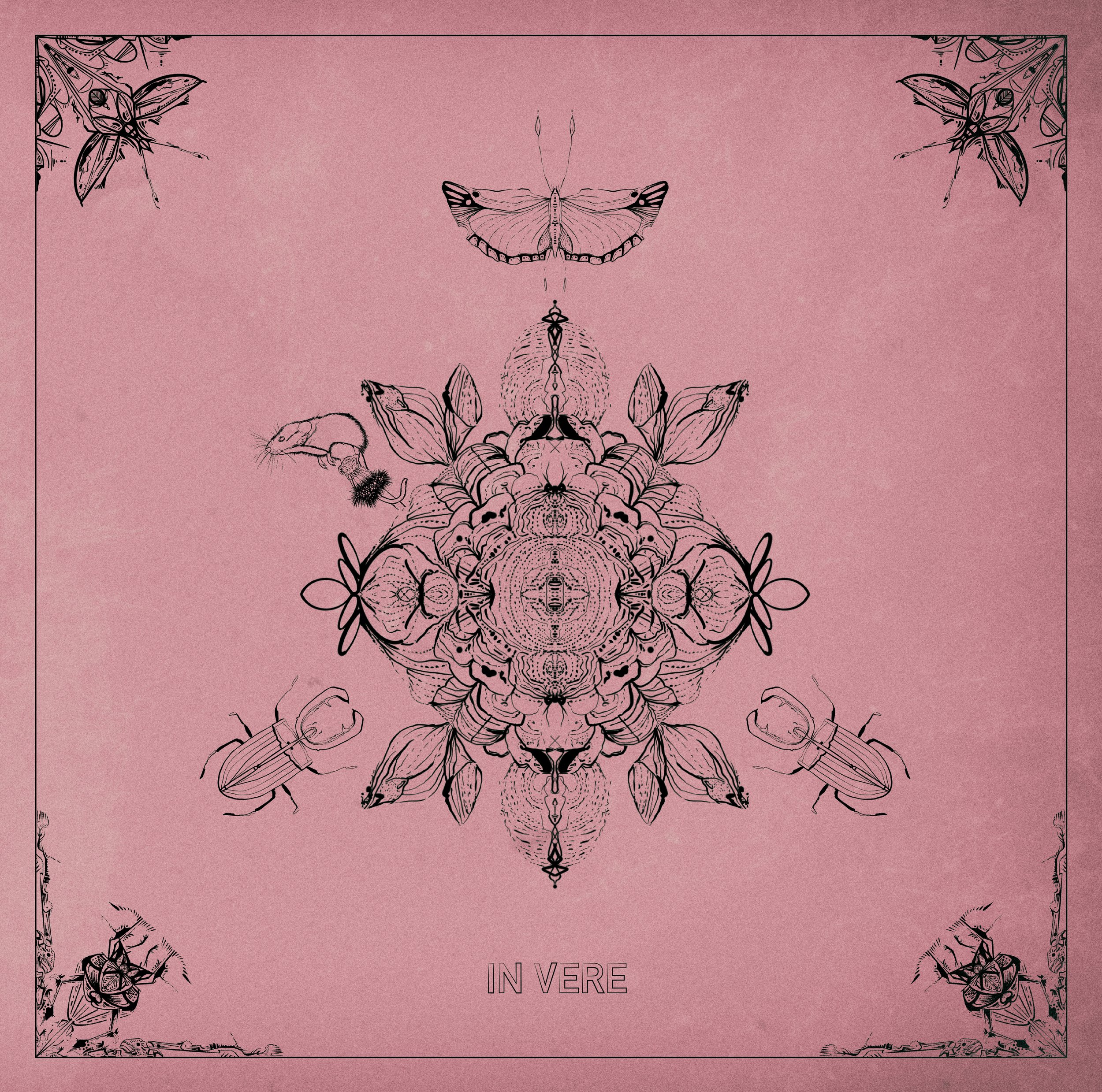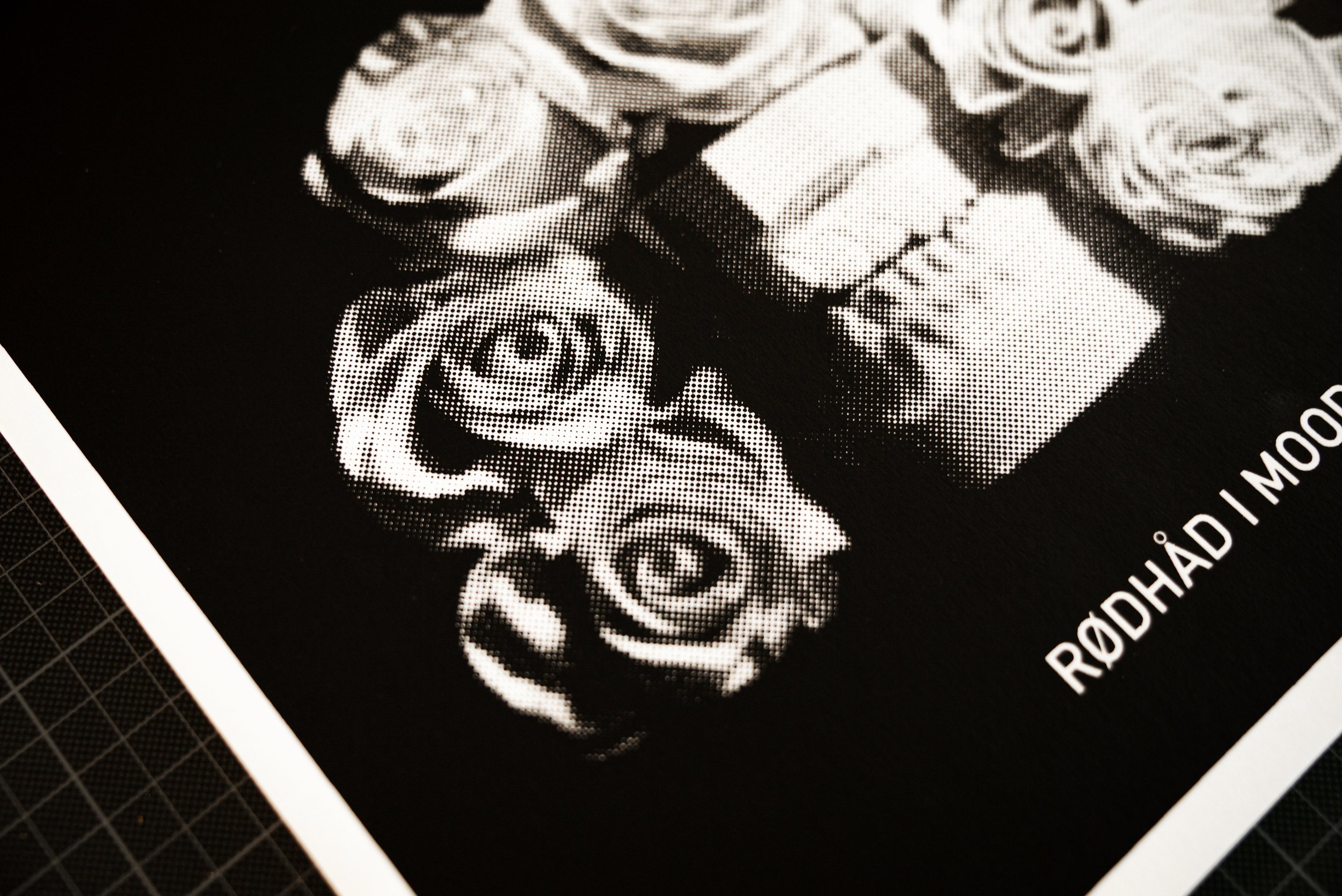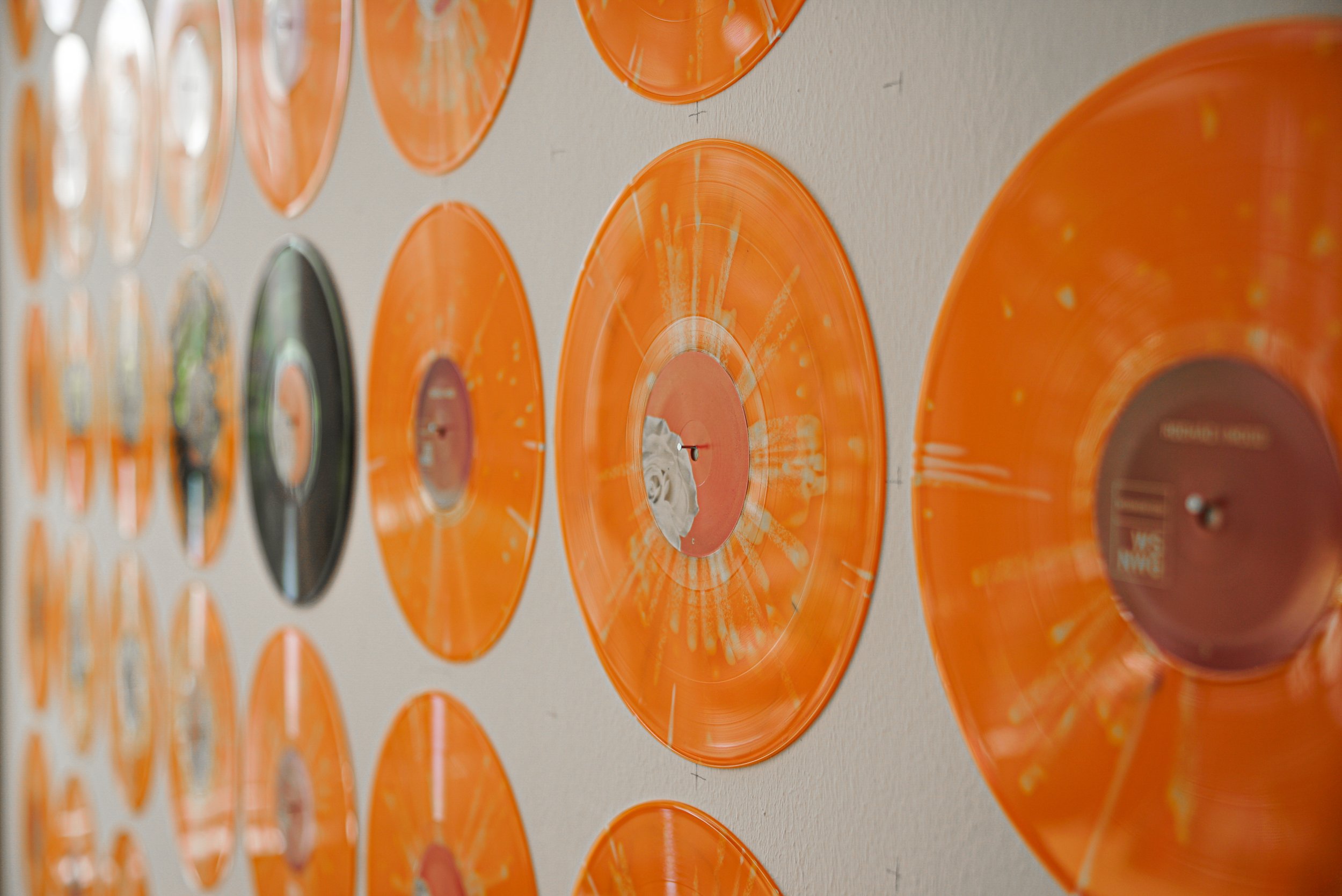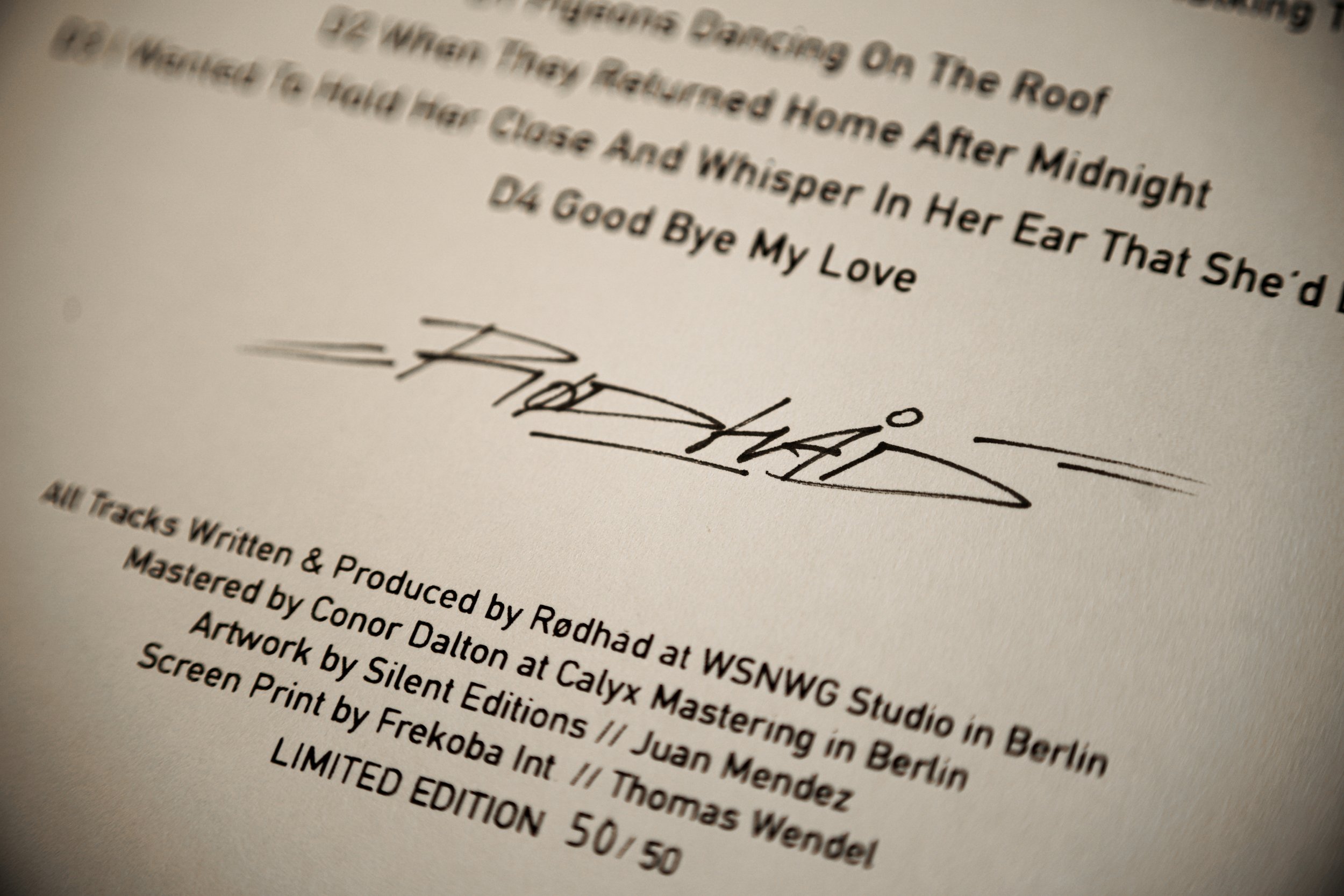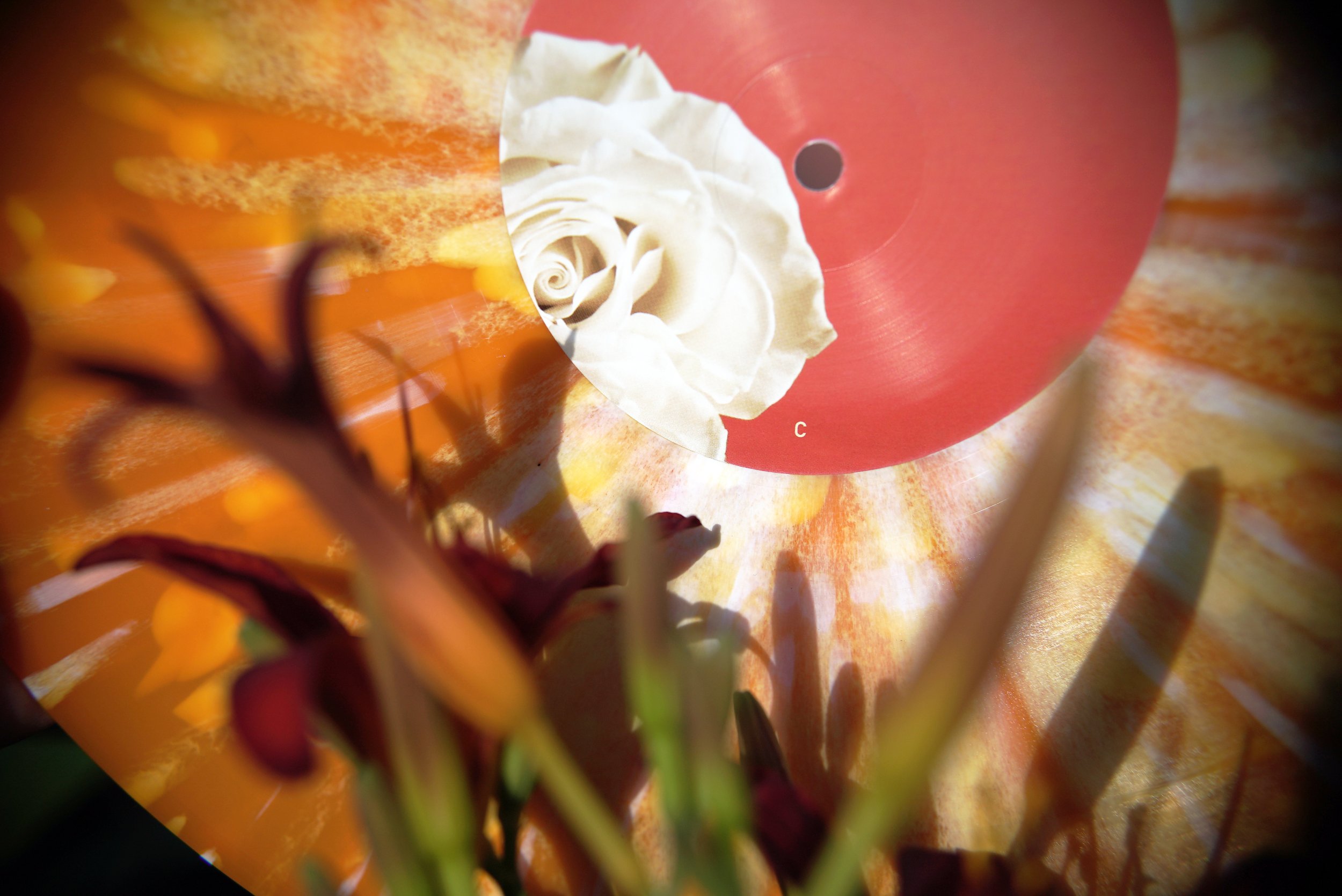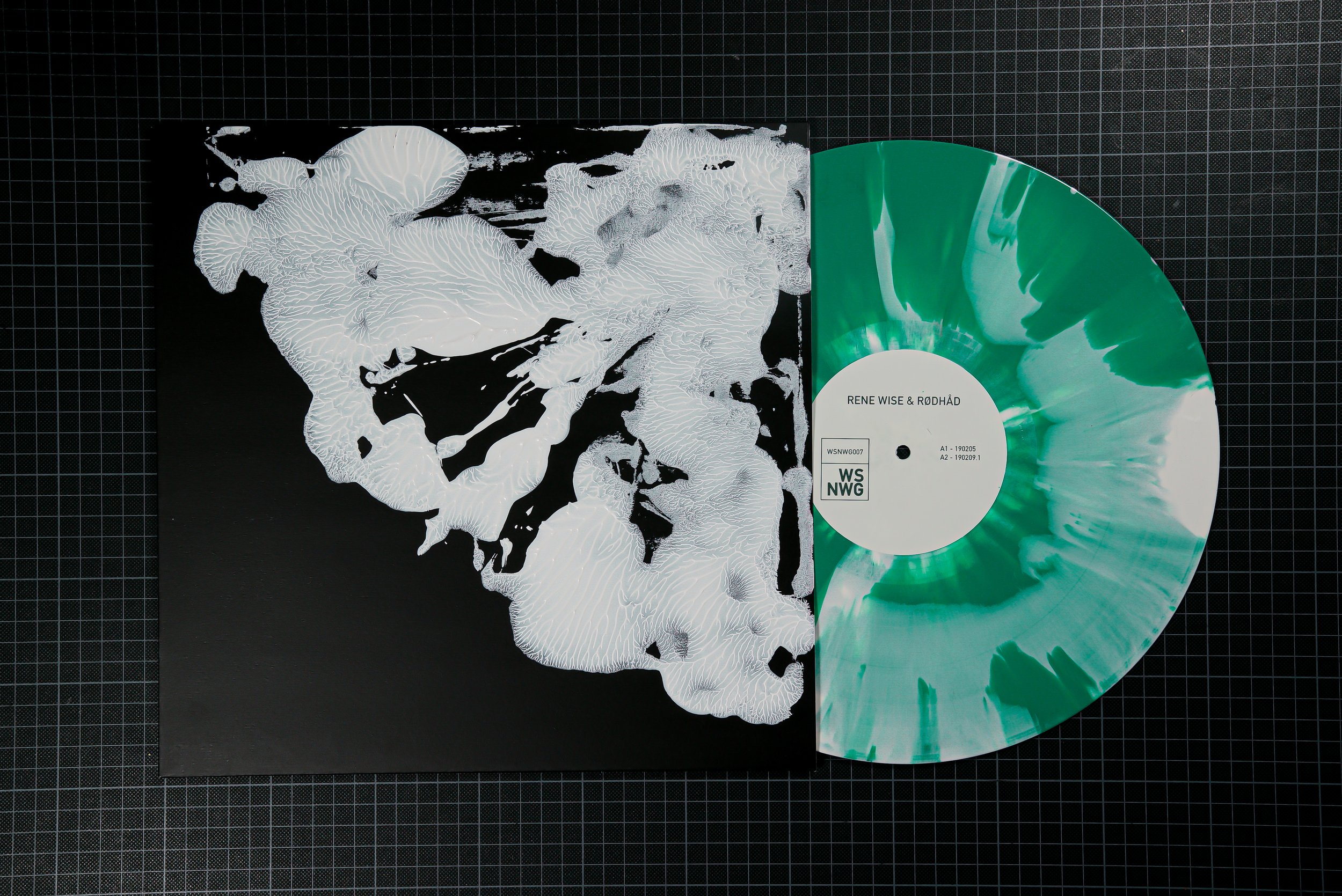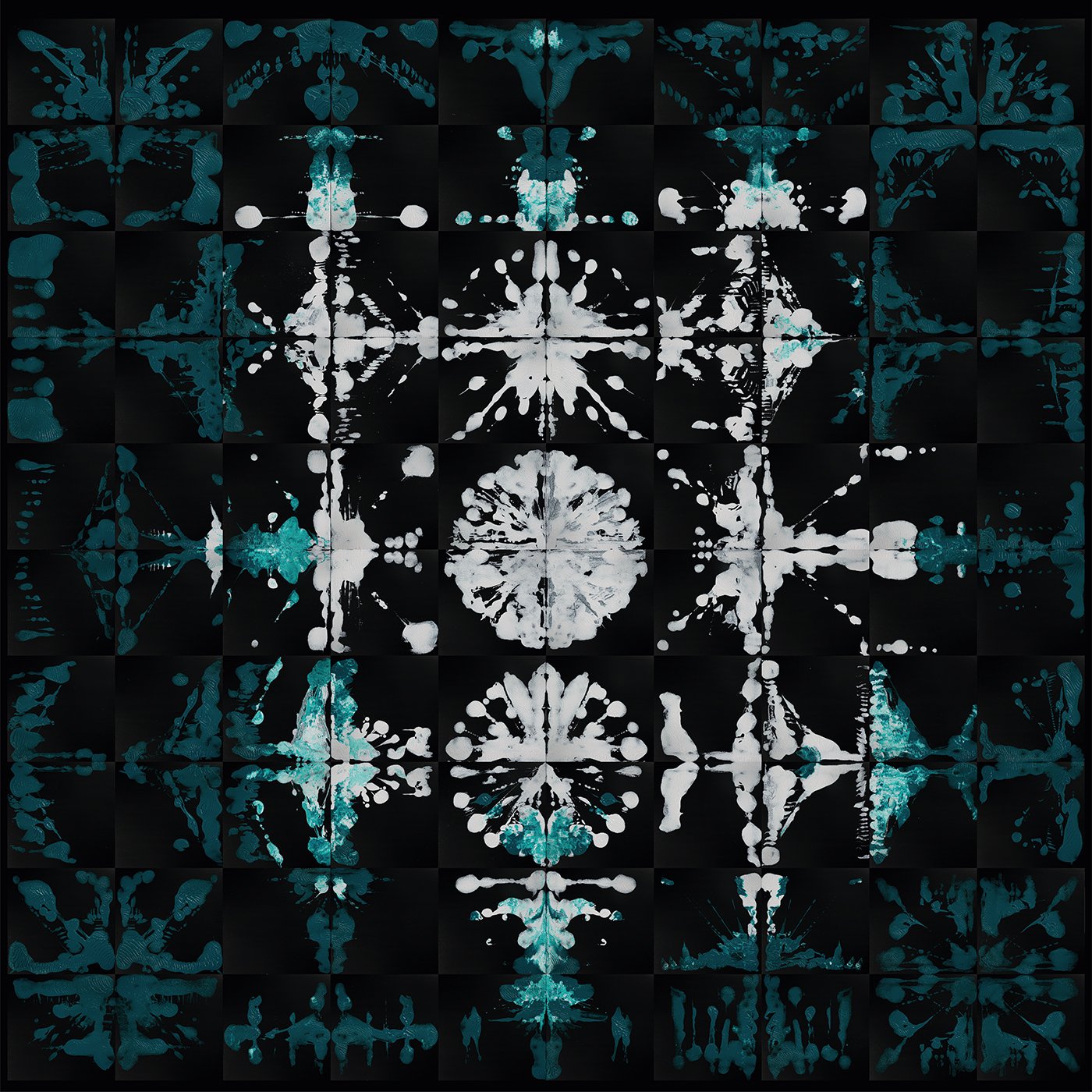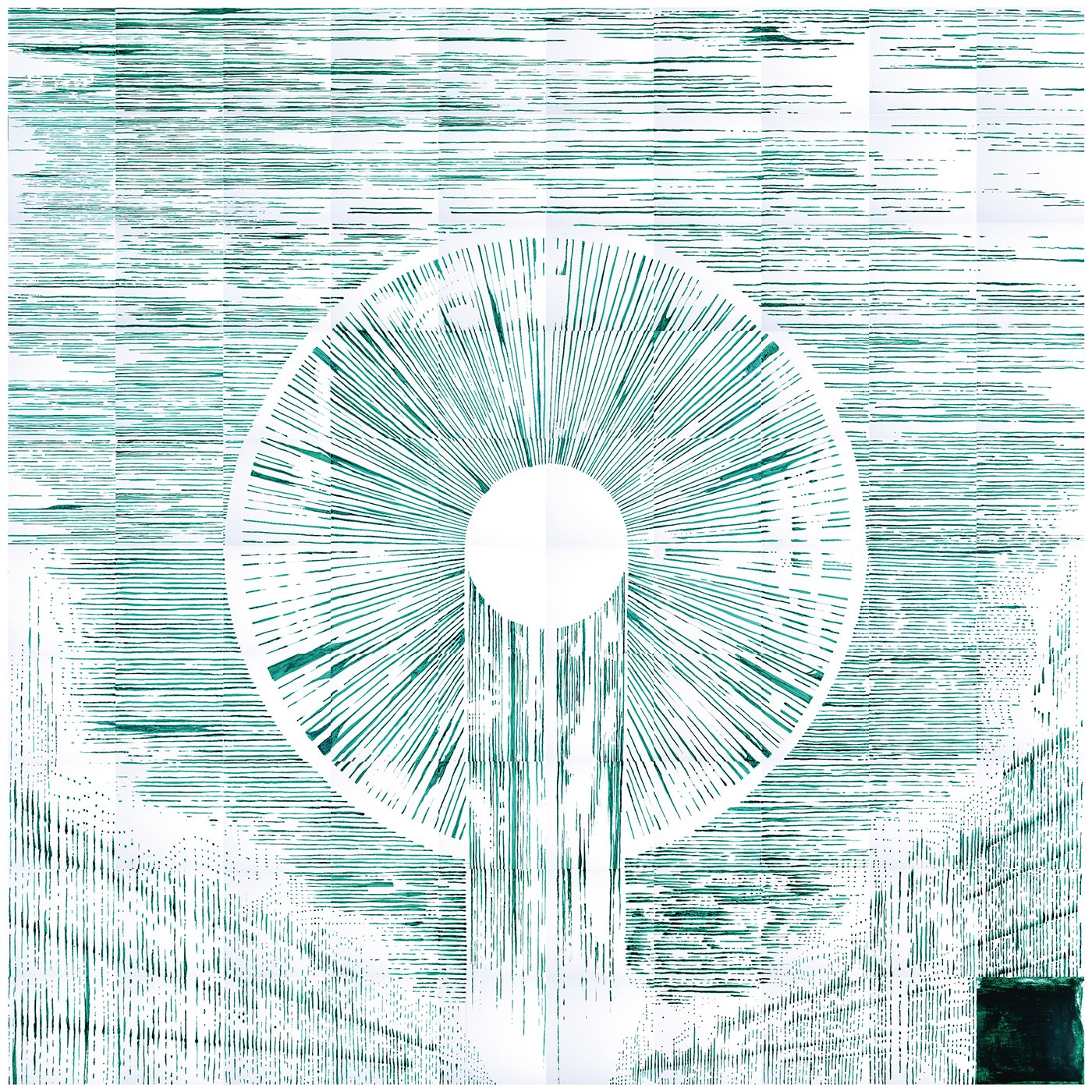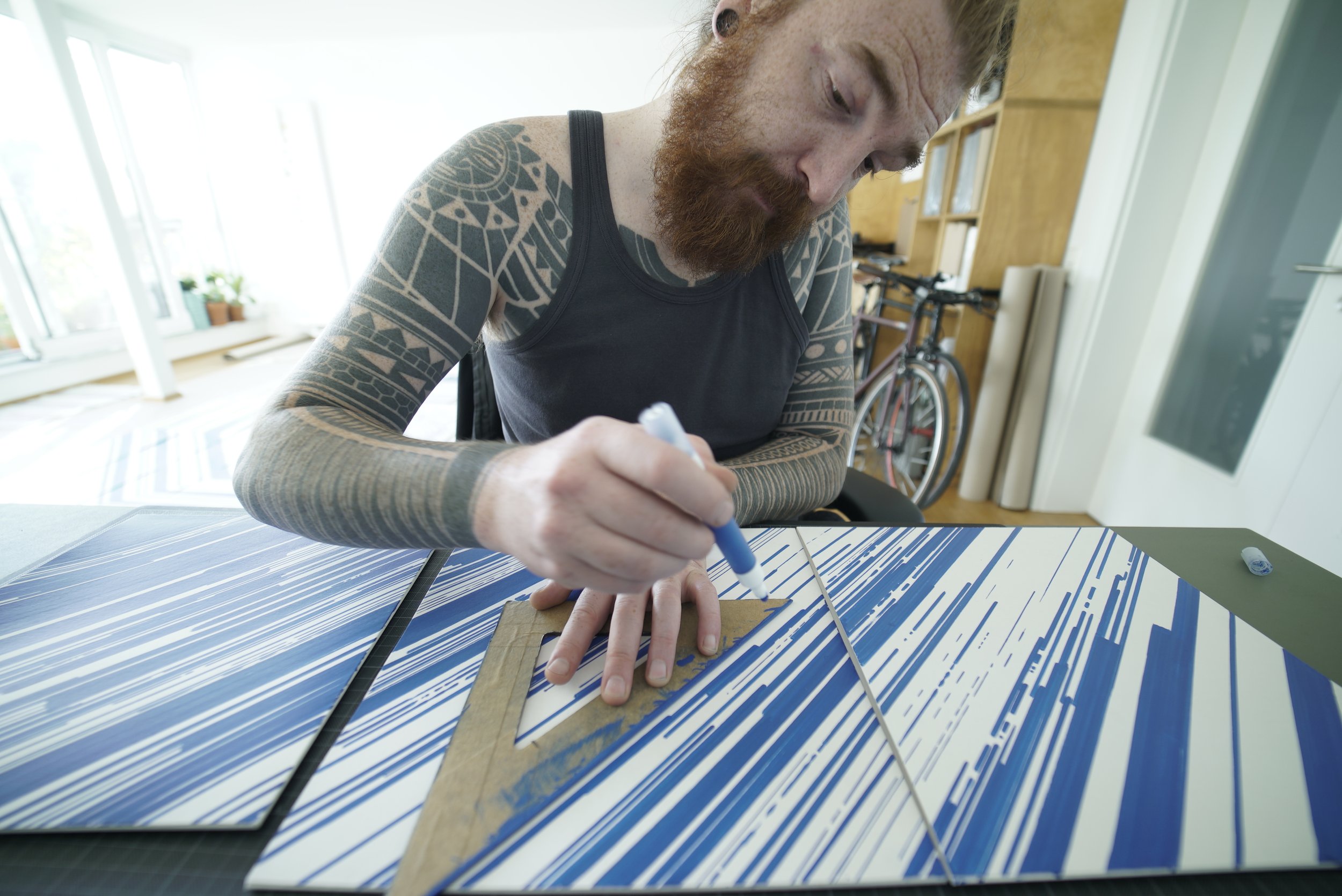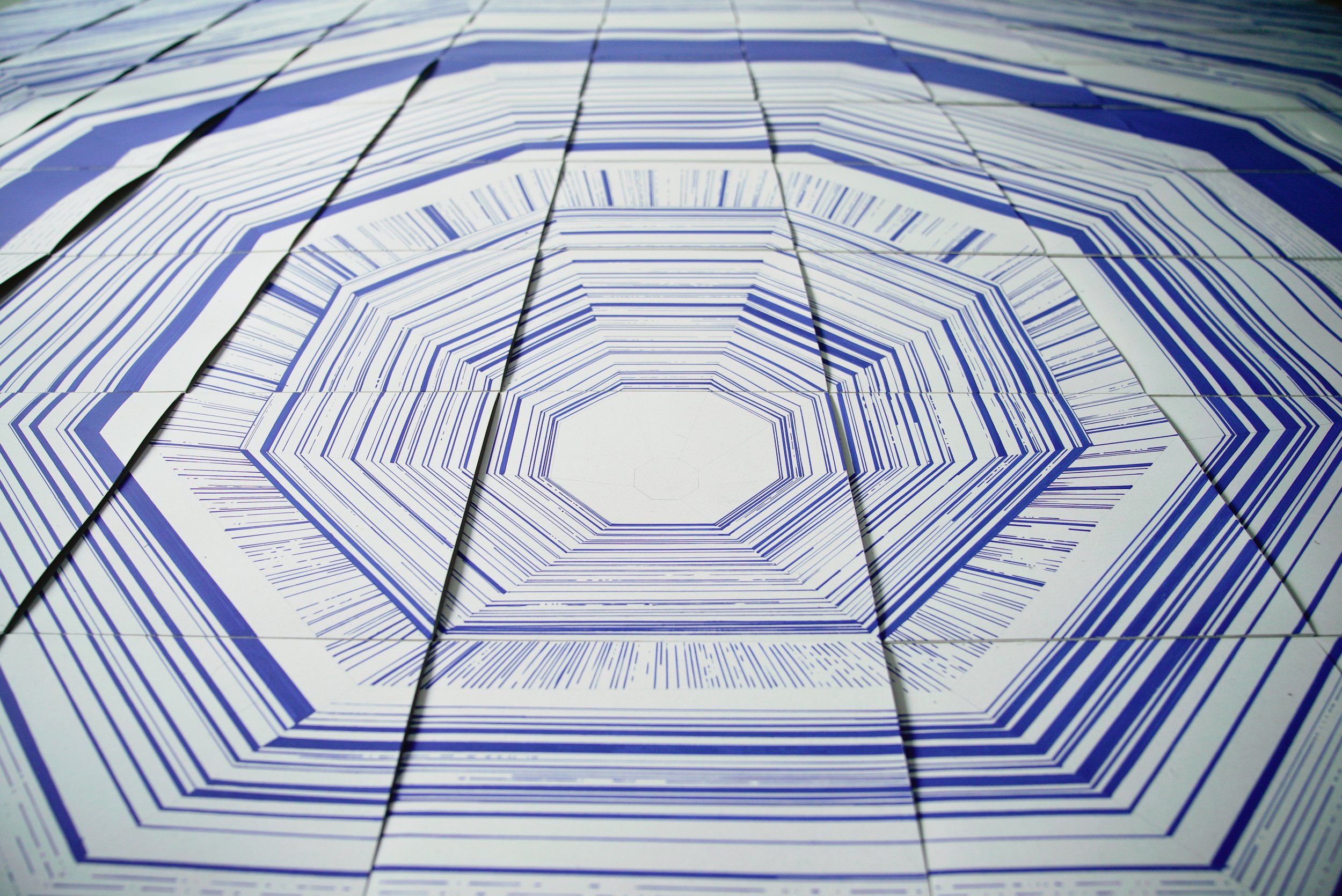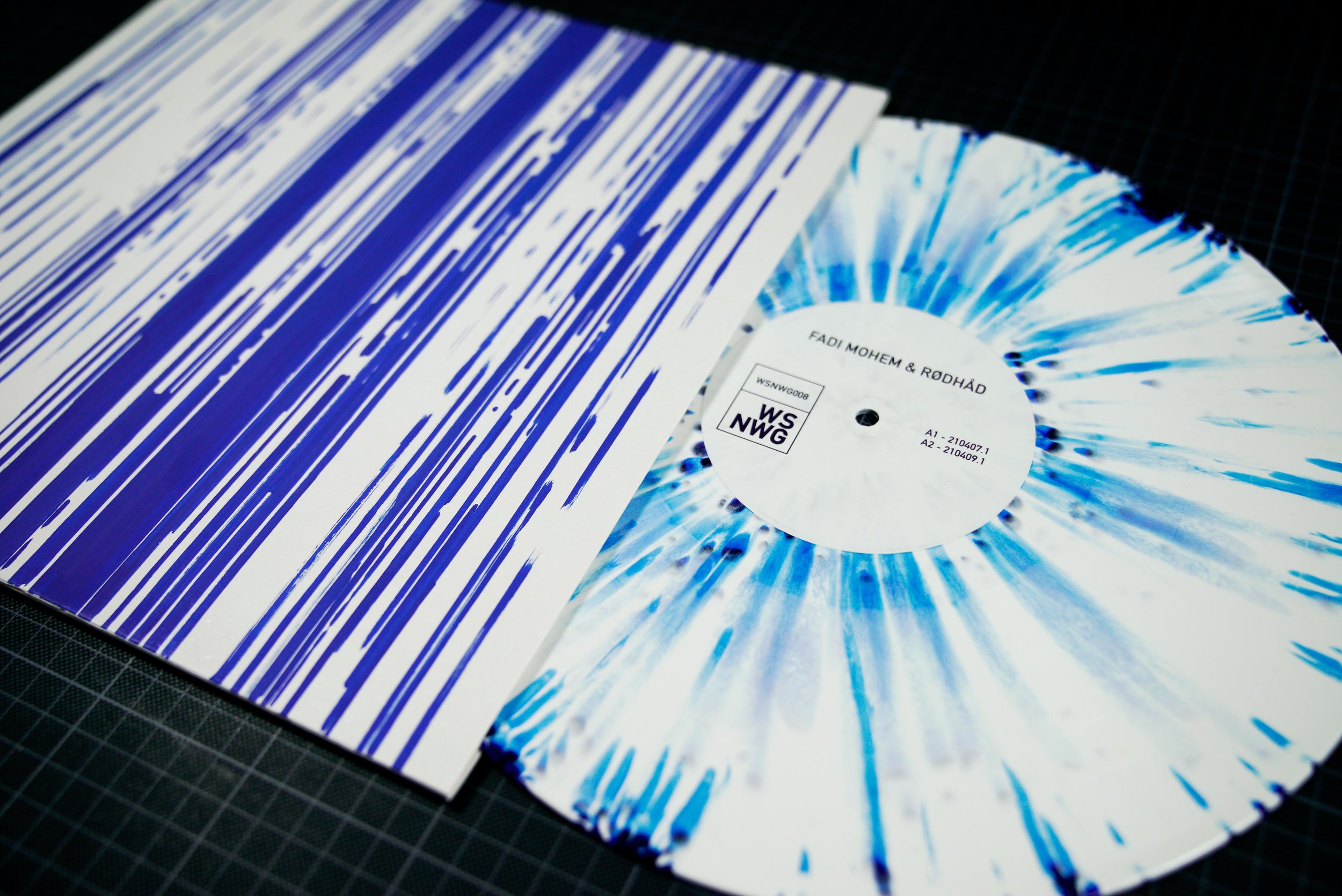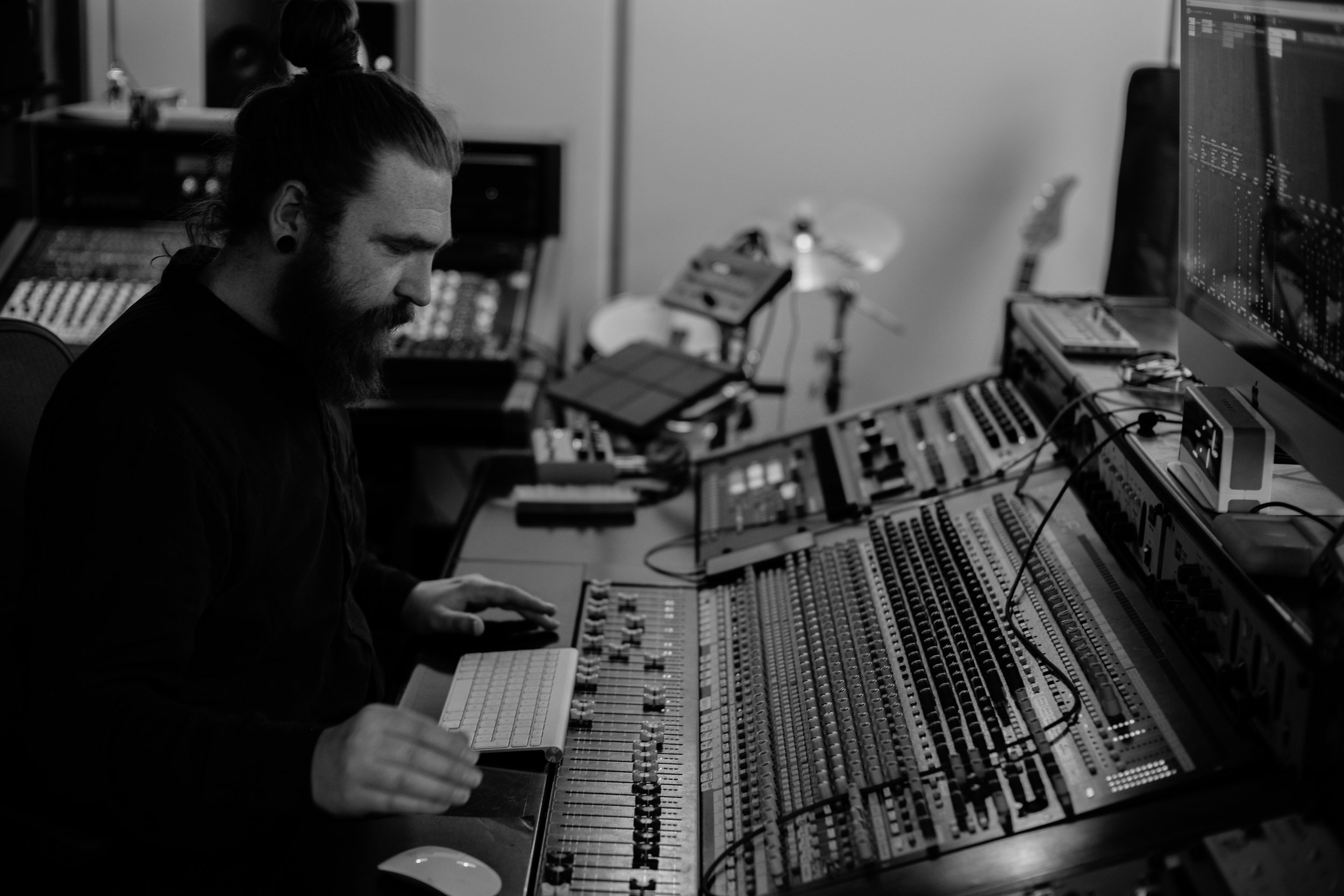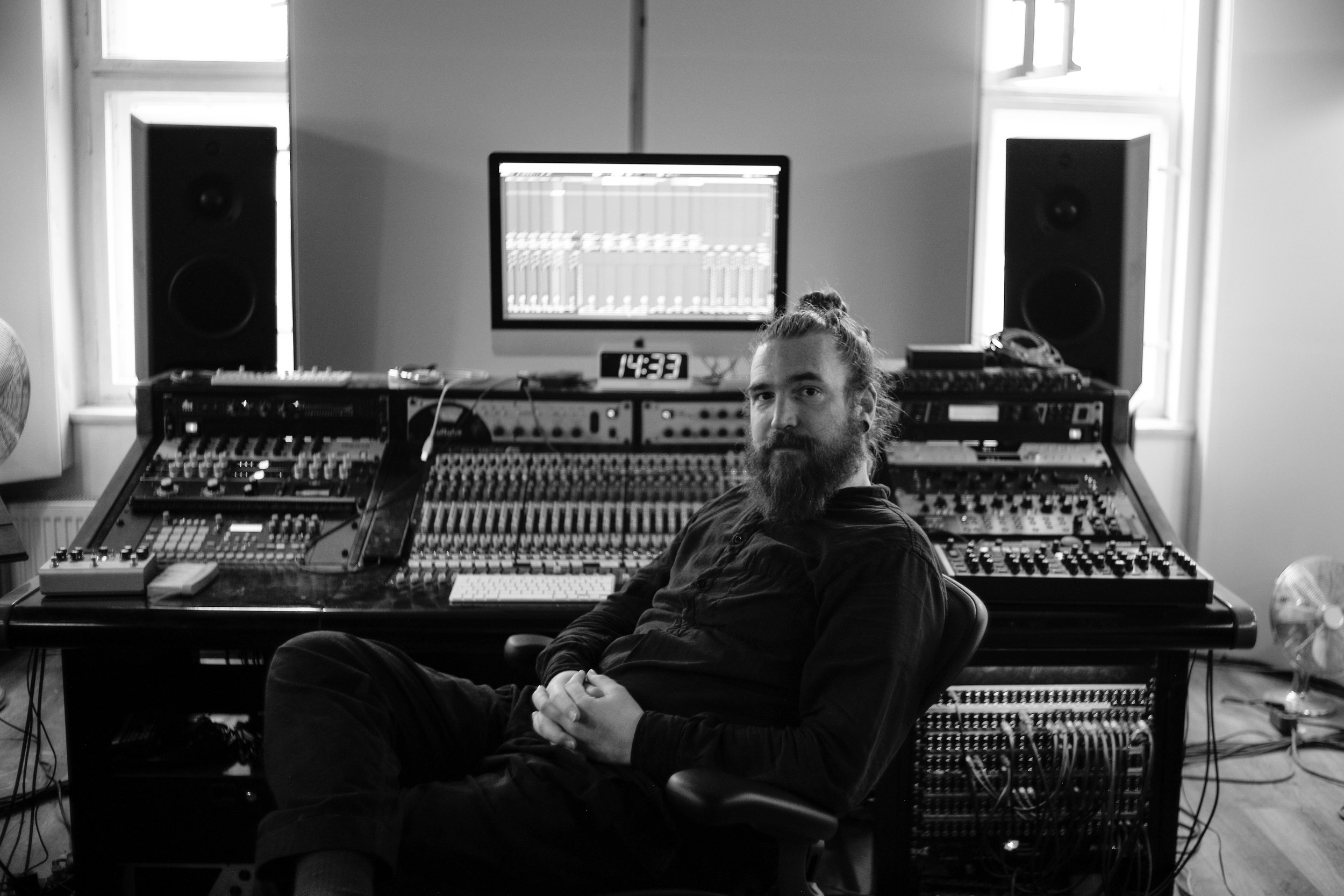Label of the month: WSNWG
The German DJ and Producer Rødhåd talks about his labels in-depth, and shares thoughts on various topics from the past few years
Strange days. It is one of the few times in my life, that I can say that I am lost for words witnessing the state of the world right now. No matter whether it’s close or far from us, war is always happening somewhere, and the ones that pay the highest price are always us – the ordinary people. At this point, everyone including myself, is doing whatever they can to contribute, communicate, donate and condemn the tyranny. This is what gives me strength and hope that a better world is possible and good will prevail.
Throughout history, music has always been a powerful tool for expression when it comes to war. While the instruments and tools may have changed over time, the message of music during such times, has remained the same – to unite the people, and oppose the horror, suffering, and the absurdity and meaninglessness of killing and war. Today I would like to do exactly that. I want to talk abour our music and our scene, and remind everyone of the great power that we possess. The dancefloor is our place to unite and protest, and I hope that for a brief moment, while reading this article you will be able to find inner peace through the love and passion for music, which will ultimately charge you to face our harsh reality day in and day out.
Recently, I had the chance to sit down with Mike Bierbach also known as Rødhåd in his studio for a long chat. We discussed his current focus and his new label WSNWG. Stick around to find out more about the concept, how it developed, where it is going, the curation and other interesting stories from the past few years. There are also answers to questions you might have had for a while, so brace yourselves and dig in this very interesting read.
Introduction to WSNWG and the joy of collaborating in the studio
Mike Bierbach also known as Rødhåd is a German DJ and Producer born and based in Berlin. He is one of the most influential artists of our time, and a personal favourite of mine. Mike has been active in the electronic music scene for 20 years now, and his contributions are significant. From touring the world, through running Dystopian, the German artist has proven more than once that he is a never-ending source of creativity when it comes to the projects that he engages in.
WSNWG started in 2018 with the first collaborative release between Mike and Lucy. ‘’In the beginning we were just jamming around and finishing music, and didn’t really know where to put it out. At the time Stroboscopic Artefacts and Dystopian’s planning were in full effect, so we thought about doing a one-off. We didn’t even have a name, but a catalogue number was needed, so I decided to connect it to my studio. WSNWG is my studio in which I moved in 2016.’’ Interesting! It seems like Mike had enough time to feel ‘at home’ with his new studio and setup, so much so that it would inspire him to create a label concept named after it. Having followed him for years, I believe that we are only scratching the surface and the depth of the concept is yet to be revealed.
‘’The idea wasn’t to do a sub-label of Dystopian, but to create an outlet, where I can put out music fast. Usually, label planning takes time, and the actual execution of these plans even more. I’ve always loved jamming with people. Even back in my old studio this happened a lot, and in 2016 when I was in Rotterdam at Jochem’s (Speedy J) studio - the STOOR lab, I got really inspired. He has so much gear and this huge space, and just being there, experiencing it all and generally the idea of having a week with someone in the studio was really inspiring.’’ I could totally see that connection. Both Mike and Jochem are big gear fans and I can imagine that when they have extended time to work on music together it’s quite something. For those of you who don’t know, Rødhåd appeared on the STOOR label in 2017 in a collaborative record with Speedy J cut to a limited edition of 50 copies. Another release by the two artists followed shortly after, and finally at the end of 2020, Mike contributed a track to a STOOR VA compilation. If you got your hands on these records, hold tight, because these are probably unlikely to be repressed. ‘’This experience coincided with me building my studio, so I did build it with this idea in mind to also invite people to jam.’’ Sounds like the collaborative element has always been there for Mike, and there just needed to be the right space where he can unfold this and turn it into a well thought-through successful concept.
‘’The idea wasn’t to do a sub-label of Dystopian, but to create an outlet, where I can put out music fast.’’
Mike Bierbach, Rødhåd photographed by Thomas Tiefseetaucher in the WSNWG Studio in Berlin
Perhaps it was a natural progression to get to eventually releasing those jams he’s been having before. ‘’Yeah! When you look at the release with Alex.do from 2019 for example, there are tracks from 2016 there and the initial recording of some of them was done at my old studio.’’ That’s some difference! I am glad that Mike decided to still put this record out. With techno in particular, I think that the genre itself has this feature of being ‘timeless’. Of course, it can be very influenced by current trends and movements, but there is a big part of techno that will sound good after many years as well. Mike smiles and jumps in ‘’IF it’s timeless! A lot of music has short life-span, but what I am trying to release is certainly on the other spectrum.’’ I agree with Mike and yes, his music in particular can be put in the ‘’timeless’’ category, because it is very unique. This is for me one of the few examples of true storytelling through sound, which is often enhanced by its cinematic character.
10 minutes in our conversation, and I can already feel that this will be a long and interesting talk. I wanted to circle back to the beginning of it, and the core idea of maintaining a catalogue of collaborations only. That seems like quite a challenge and I was wondering if it would be a long-term plan? ‘’That’s the idea, and in order to not interfere with this concept, I created the sub-label Back to Zero, which is a place for my solo releases.’’ That makes absolute sense, and I think it’s quite nice that Mike has found a way to not limit himself or his output, while staying true to his original ideas. Before we dive into Back to Zero though, there is a lot that I would like to know about WSNWG. Let’s start with how Mikes chooses his collaborators. What I have noticed so far, is that most of the artists that appeared on the label are long-time friends of Mike and people that he has worked with on other occasions before. Ultimately, he had the chance to build deeper connections. It can almost be described as his own small ‘community’ that he created over the years.
‘’In the past two years it was mostly possible to jam with people in close proximity for obvious reasons. Most of the artists on the label are either from or living in Berlin. Vril is the only one that is coming from another city in Germany to jam with me occasionally for a week or so at a time. There are actually a lot of people I am already recording with at the moment.’’ That is all understandable, but my curiosity got sparked by those last words about the ongoing jams that Mike has at the moment. Are those artists that he is working with a good balance between established and upcoming talents? One of the examples from the current catalogue about a non-local, non-Berlin based artist is Rene Wise.
‘‘Already back with Dystopian, the idea about pushing young talents has always been there. I would like to continue with that at WSNWG too.’’
‘’At first, I went ahead and asked my friends to jam with me, but as the label started growing, I started approaching people whose music I like. I also get sent a lot of music often. In the case of Andrew (Rene Wise), he has been sending me music for a while, and at some point I asked him if he wanted to come and jam with me, which turned into a record. Already back with Dystopian, the idea about pushing young talents has always been there. I would like to continue with that at WSNWG too.’’ I did not think about it before, because to me all of the Dystopian artist were somewhat ‘established’, but if I turn things back a little, I can see how Mike has played a big role in supporting and building upcoming artists already back then. I love seeing this kind of involvement with label owners in general as I believe in building, participating in and maintaining a community. Especially in times like these, it’s crucial to support each other, and pay attention to the things that matter like talent, hard work and the intention towards the music and culture. It’s not just about thinking about the catalogue, and which name would bring the most sales. I am pleased that Mike is someone, who somewhat shares some of my views in this way and is contributing positively.
‘’There are a lot of new talents approaching, and at the moment you can clearly feel the trend going towards more ravey music, very hard and fast, but I think there are also a lot of young producers out there who make the kind of techno I like.’’ Now that he mentioned it, I couldn’t resist asking if he could describe his ‘favourite’ kind of techno. It’s still interesting for me to hear, because in my experience, Rødhåd’s sets are often quite different from some of his productions. In a set you will be completely lost and hypnotized, while being on a very intensive heavy journey, while some of his works are more conceptual and cinematic.
‘’That’s true, but when it comes to producing techno, I get quite easily bored with this loopy music, which I like to play most of the time. That being said, when I produce, I always try to do things a little differently. Still, if you take the last few releases on WSNWG it’s definitely close to what I play. As a DJ, I have a very broad spectrum of music. I like to play ambient and other genres. To go back to my ‘favourite’ kind of techno, it’s not per se only one direction, for me it’s more about the vibe music has. I really like groove and basslines.’’ I see what he means! In the end, trying to describe one’s ‘favourite’ kind of techno is never an easy task, and it’s hard to give a straightforward definitive answer, especially if your interests and taste spread over other sub-genres of electronic music.
Like he mentioned, currently many people are focusing on different kinds of music, and for me it has always been and still is predominantly hypnotic. Despite the fact that in his DJ sets Mike does play loopy music combined with heavy basslines, to me he is one of the most ‘hypnotic’ artists out there. Especially in his closings at Berghain, Mike is never only maintaining one tempo and one vibe or mood, but no matter at which point of the night you are, you always feel hypnotized. I have always wondered whether he would consider a collaboration with artists, who are purely hypnotic techno producers, as in my eyes this would be an extremely interesting outcome? ‘’It’s a bit of a hard topic. One of my favourite releases on WSNWG is with Alex.do, and that one is on the deeper spectrum of techno. In general, I think that at the moment the market for deep droning techno is rather difficult. When it comes to EPs, people like to be able to play them in a club. I just don’t think that it’s the right time to put out this kind of techno now.’’ I am a little sad to hear that, and while I understand where he is coming from, I shared with Mike that my experience with this music is in fact quite the opposite. No matter how much I adore club music, being at home for so long, my mind sometimes needs a rest. Recently, I’ve been resonating more with genres that are nurturing and calming, rather than constantly hammering music that reminds me of what we can’t have.
‘’That’s true, and that’s kind of what I also did during the pandemic. In the end, I think that this kind of music works better with an album format.’’ I agree, it’s a story. I had to think also about the release with Fadi Mohem, which brought out the dubby side in Mike. Even though, it was still a rather club-oriented EP, I think it is yet another proof that Mike can really adapt as a producer and venture into different kinds of projects. Let’s see what the future brings, perhaps my dream about another deep collaboration will soon come true.
Having mentioned briefly the artists that have appeared on the label, I wanted to know if there are certain things that Mike looks for in a collaboration? For example, approach in the studio, way of communication, attitude towards the process and general workflow.. ‘’The thing is that in the first releases, as you said, it was all my close friends, which I knew before so there were no surprises there. As of recently, I started working with people I don’t know, and it’s been a very nice experience. I get to meet new people, but when I am here in the studio the most important aspect for me is to have fun together.’’ It’s when the magic happens! ‘’Absolutely. I work with all kinds of people, but looking at the latest releases, you can tell that those are people that share the same values as me.’’
‘‘As of recently, I started working with people I don’t know, and it’s been a very nice experience. I get to meet new people, but when I am here in the studio, the most important aspect for me is to have fun together.’’
Rødhåd at the WSNWG Studio in Berlin, @thomastiefseetaucher
An in-depth ‘‘behind the scenes’’ of the WSNWG releases and gear talk
As we all know team-work is not flawless, and even if you work with friends, sometimes there could be difficult moments. If you work with people that you don’t know so well, the risks are even higher even with the best intentions at heart, and navigating that space could be a challenge. ‘’The challenge most of the time is being dependent on the other artist’s workflow in the studio. For example, with Phase, he is someone who mainly works in the computer, and additionally with a different DAW. When he comes to the studio, he has to step out of his comfort zone. In the end we just jam around and it’s all good, but when it comes to editing, it’s useful when the other person works with the same DAW. With Fadi on the other hand, 3 of the tracks on the record we recorded in one day. This EP is very stripped down, and with this kind of setup it’s easy to record a lot of music. Additionally, Fadi is working with Ableton too and has a similar approach to mine, which translated in a quicker final result.’’
So many interesting insights into every release on the label! Hearing about the differences between different artists, I was wondering if it normally takes a long time to finish a record? Does it depend on who he is working with, or the direction of the music being created, or the mood? ‘’Usually, the main idea is to record everything very fast. We don’t take more than a day, and maybe a bit of editing on top of that, which I do before sending it over for mastering. When the artist is here, we do it together, but if we don’t have too long together, we work on it separately and send it back and forth to each other until we find the right mix for both.’’
‘‘The challenge most of the time is being dependent on the other artist’s workflow in the studio.’’
‘‘The way my studio is set up is also some kind of modular and everything is connected with each other. When I buy synthesizers for example, I try to make sure that the instruments I choose have a lot of possibilities to do modulations, which you can do in a modular setup.’’
One of the collaborations that I am interested in, especially from a technical point of view, is the one with Lady Starlight. I know that she has a modular, and this is something which I didn’t see in Mike’s studio, but would be a piece of gear I could totally imagine him zoning out with. ‘’It was really easy with her. She did bring the modular and it was a lot of fun. I think for me, the problem with modular is that it’s a bit distracting. It’s quite expensive, and when I start, I will go down a big rabbit hole. The way my studio is set up is also some kind of modular and everything is connected with each other. When I buy synthesizers for example, I try to make sure that the instruments I choose have a lot of possibilities to do modulations, which you can do in a modular setup. I know how to use modular, but I remember once I was at Schneidersladen, which is a store about modular in Berlin, and one of the people working there shared that it’s great stuff, but a big part of the time it’s troubleshooting. When I go to the studio it’s fun to make a patch and make a crazy sound, but it takes so long until you reach a point. Most of the modular music I hear is like a basic synthesizer the way it is patched. Why would I need a modular setup to do this basic kind of patches?’’
That’s a very good point! I didn’t know that there is so much troubleshooting involved with modular, but I can see how this is true given that it’s a lot of physics and math in the end. With my limited knowledge on the subject, I always imagined that this is something that people choose because it can produce those unique sounds that an already assembled synthesizer might be limited to. Knowing how much Mike loves weird and unique sounds, I thought this could be definitely something for him. ‘’I am sure I can have fun with it, but the main reasons not to go that way are time and the fact that I will get addicted.’’ That honestly made me laugh, because I do know people that are into modular and indeed it’s an addiction. Something like buying vinyl – once you start, there is no.turning.back!
‘’Definitely! With everyone that comes to my studio it’s more or less the same process. We jam and we record full tracks or parts of a track and depending on the time we have together, the amount of output and the workflow is different. With Andrew for example, he was here for a week, so that period was structured differently.’’ I see! It makes total sense to streamline parts of the workflow in order to optimize the time together.
The exchange, studio setup, Out of Place Artefacts and exciting announcements
I am sure that every artist that goes to jam with Mike learns a lot from him, as he is an experienced professional, and in addition to that he is in his comfort zone, because it’s his studio, where he is a master of every process. On the other hand, I think it’s interesting to hear what is the effect on Mike and whether he also learns a lot from each session? Are there things that he picks up from collaborators? ‘’For me one of the biggest advantages from this entire process is the exchange. It’s inspiring when you see how other people approach things, and surely I want to give knowledge to them, but it is always an exchange!’’ I think that’s quite important for collaborative work, because it should always come from both sides. Otherwise, the main concept of the label won’t work after some time, because it could become boring if it’s just one sided and also not authentic. ‘’The best and fastest results I usually get when I work with people that are on the same experience level as me, but of course if there is someone just working in the box for example that’s an exception.’’
This studio is not like any other that I have been to. It’s certainly a centre piece of the label, and the place where ‘the magic happens’. Since he mentioned earlier that there has been a previous studio, I was curious if Mike has settled here for the long term with his perfect for him setup, or if this space itself is constantly evolving based on his current moods towards production? ‘’At the moment I have to say, that I am quite happy with what I have here and how everything is organized. I get new pieces here and there, and at the moment I am trying to get rid of some machines that I am not using so much. Last year, I did some updates on the patch bay because I was thinking of starting to do some mixdowns for other artists. During the pandemic, I was not sure how everything will continue, and I had to think of alternative solutions for my job. I was thinking about opening up the studio for other artists to use. Not to rent it out, but for example to offer mixdown sessions, where I would invite the artist and help with the process and introduce an educational element. In the end, to be honest, I’ve been very busy, so for now the outcome is that I have a very nice mixing channel which I also use for my own work. Of course, the studio is evolving a bit, but I am quite satisfied with the main setup.’’
‘‘For me one of the biggest advantages from this entire process is the exchange. It’s inspiring when you see how other people approach things, and surely I want to give knowledge to them, but it is always an exchange!’’
On the one hand it’s a shame that Mike was so busy and didn’t go through with this plan, but on the other of course I am quite happy to hear that he didn’t have to resort to other methods of work, and could only focus on the label and creating more fantastic music. Now that I am speaking to him, I realize even more how much he actually enjoys working with people, which gives me the confidence that at some point he will realize this nice plan of his, and open the doors to WSNWG in this way. For all my readers that are crazy gear fans, I wanted to know what are some of the latest additions that Mike bought? ‘’I just got a new drum machine from Soma. It’s actually a drum machine, which is also a modular, which means you can patch on it. It’s more for making experimental music. I got inspired to look into this, because Vril also has it and he brough it to the studio for the Out of Place Artefacts (OOPA) release, and I really enjoyed it.’’
Actually, OOPA is one of the biggest collaborations on the label that we still did not touch upon. Rødhåd and Vril have worked together before on multiple occasions, but this concept is on a whole other level. It feels like it’s going beyond the label into an alias, with which they already performed a few times and plan to do so in the future. I wanted to know more about this project, the experience and the plans. ‘’The idea behind this project is actually to do everything but techno. We are making music together since 2016, and the start was actually the track ‘Target Line’ in my debut album ‘Anxious’. In the second year of working together, we came to the conclusion that we wanted to have a more experimental approach to the music – different tempos, completely crazy things, totally free of any genre. That’s why it’s so much fun, because there is no pressure to deliver dancefloor music and you can be free.’’ Somehow, this album is also rather hypnotic and deep to me. Especially thinking about tracks like ‘ORELA’ and ‘KYBALION’ or ‘ENNOCH’ give me such a vibe. I remember the very first release party of the album here in Berlin at Oxi Garten. It was one of the last beautiful autumn days, the weather was nice, yellow and red leafs were floating around in the air around the stage, and the music was just so dreamy! Feeling lucky I got to experience that. Later on, the duo appeared at Berghain Garten too, and just before the new corona measures kicked in for the winter, we saw the OOPA name on other upcoming line ups too, that unfortunately did not materialise yet.
‘‘The idea behind this project is actually to do everything but techno.’’
‘’Actually, we have a live set now. Last year we did this live stream with Arte in Essen, where we presented it. In fact, we are currently working on a second album! We are hoping to release it late summer/early fall this year, given that there will be no delays for vinyl production. The record with Phase for example, we produced the last tracks in March, but I only had it in June. At the moment we are talking about half a year or 35 weeks production time, which is very long. This of course influences the way you can put out records. Already last year, I kind of made a plan about the label and upcoming releases. Before, I would just finish music and release it, now it’s complicated and you have to plan ahead.’’ Surely that’s a safer approach, but I was wondering if this affects the process in the studio in the sense of putting some kind of pressure that a plan must be fulfilled? ‘’Not really, it’s all about planning. I am about to finish a record with Jako Jako, which will be an album to be released some time in May! It’s more ambient, but it has some techno pieces too, and I am also currently working on the cover.’’ Great news! Jako Jako was one of the people that he jammed with live this past summer at Oxi, and it was an interesting combination soundwise. I am feeling lucky that Mike is giving me a sneak peek into the art and the music that’s coming up, and what I can tell is that I am getting ‘Alice in Wonderland’ kind of vibe visually. Mike smiles and goes on ‘’Yeah! I think it fits very well with the music, because we recorded this in Spring time, May last year when the vibe was quite positive in Berlin.’’ Indeed, the music fits. Normally, Rødhåd’s albums carry a certain melancholic feeling. ‘’Certainly. Jako Jako pushed me in another direction, because these melodies are something she is into. Like I said earlier, as an artist it would be boring to just do one thing, so I am interested in everything, and what people can bring to the table.’’
Cover art for the forthcoming album by Jako Jako ‘‘In Vere’’ to be released on WSNWG in May
When I listen to the catalogue of WSNWG, I can hear the consistency. That can be attributed to the fact that Mike is part of each and every project, but on the other hand every next release is a surprise in a way when it comes to which sound direction he is going to take. ‘’One thing is that I am part of every release, additionally it’s the studio and the machines here, and how everything gets processed, but then the collaborator is also pushing different directions.’’ Maybe also exploring different parts of the setup that he doesn’t always reach for on his own. ‘’Yeah that can happen!’’ As he goes on to give me a preview of some of the techno tracks, I hear that even there the sound is more on the higher melodic spectrum, which indeed gives a feeling of hope and a new beginning, just like Spring! I think everyone that lives in Berlin can relate to that much desired change of mood and relief after the long and hard winters that we have here. ‘’It’s a very diverse record, but there is still a vibe throughout.’’
Since OOPA and In Vere are the only collaborative albums on the label so far, I was wondering if such a project is more time-consuming and challenging, especially when you take into account the fact that albums are more of a complete story. Would there be more albums in the future on WSNWG? ‘’I hope so, yeah!’’ says Mike with a lot of excitement in his voice. ‘’It mostly depends on the time you have together. When you just have one week, usually you don’t record a full album. As I said before, for EPs club music works better.’’
The visual identity and art of WSNWG
After the exciting news, I wanted to take our discussion to the visual aspect of the label. What we saw starting with Mike’s second album ‘MOOD’ that was actually released not directly on WSNWG, but on the sub-label that he mentioned in the beginning - Back to Zero, was the first limited edition record. A gorgeous coloured vinyl with a full-size cover art, which was actually done by Silent Servant. After that, Mike continued with the limited editions on multiple occasions, where he produced a colour vinyl plus handmade cover art by himself. I reckon this idea was possible to realize due to the fact that he had a lot more time in the beginning of the pandemic, and he could engage his other passion next to music which is art and drawing. One of the coolest things about the limited editions in my eyes, was the fact that he included some of the artists in the making of the cover art, which personalized the record even more. As a collectible, these releases have incredible value. It was a huge success, people couldn’t get enough of it! I remember having to put an alarm on Fridays in order to make it on time to Bandcamp, and be able to buy one of those. I wanted to know everything about the process, and how did Mike feel seeing the amazing way in which this was perceived from the audience?
‘’I would love to have done this earlier, but indeed it was clearly because I had time for the first time during the pandemic. With ‘MOOD’ I made just 50 copies to see how it will work. The cover was a screen print. After this one, I felt very motivated and kept doing it. I think people really appreciated it, and I got very nice feedback. Selling vinyl was not so easy in the last couple of years, but as you said, even if you don’t play music, you would still buy this record. When I was younger, I did a lot of graffiti around Berlin.’’ I jumped up a little in my chair with surprise hearing the word graffiti. I knew that Mike was working in an Architect studio prior to music, but that is brand new information. Curious if there are still some of his pieces left around town? ‘’Not really. I stopped doing it maybe 15 years ago, because I was constantly on the road. My job before I started professional DJing was indeed a construction drawer in an Architect studio, so I was always connected with art and painting. I started to do the special editions because I love making art. If you see the covers of number 4 and 8, they are quite hypnotizing too. When you draw lines all day it can be very meditative and calming. I also try to implement different methods. The one with Lady Starlight was done with a toothbrush with paint, and other things that I learned in kinder garden. Super simple techniques that everyone can do even if they did not have previous experience in this field before. The main idea behind the artworks I did with other people, was that you don’t have to be an artist to make art.’’ Fair enough! I guess it also takes a bit of the pressure in people that are not so experienced in this way, and brings out the fun. Like Mike said in the beginning of our conversation, the most important thing is to have fun while working together.
‘’Of course! Doing stuff together is the most important aspect of all. Sadly, with Rene Wise I did not manage to do that as he wasn’t here, but with Fadi for example, he is also painting and has the graffiti background so that was cool. The 4th and 8th release I put the most work in. After I did the release with Phase I thought for a brief moment ‘I can’t do it anymore.’ Sitting on the ground for so many hours was exhausting, but in the end, it looked really good. These pieces are also quite big, something like 3x3m, which takes a toll on my house if it takes too long.’’ Wauw! I hope that we will get more limited editions in the future whenever possible. ‘’Yeah, I try to use different techniques, and the ones that are hand drawn take the most time, but we will see what the future brings.’’
The essence of the sub-label Back to Zero
‘‘The idea of the BTZ sub-label was to get back to the core elements of what I think techno is all about for me. One of them is standing together and helping each other when it is needed.’’
Having mentioned Back to Zero twice already, I thought that it was high time we talked about it a bit more in depth. Before diving headfirst into the future plans surrounding that project, I wanted to emphasize a little on ‘MOOD’. The LP was the debut release on this sub-label, and also another concept album which showed a different side of Rødhåd, but it brought also a certain level of mystery. Looking at the titles of the tracks alone, they read like a poem. I am definitely into symbolism, so for me it was nice to try and make a connection of that with the actual music.
‘’The thing is that when I made these tracks, I never meant for them to become an album. It was just a collection of works I did here and there between touring weekends. Sometimes I’m sitting here in the studio after three gigs, and I don’t want to make crazy techno stuff. I just want to hear some drones and experiment a little bit. Some of the tracks I actually did want to release, but I never found the right space or time. With the pandemic, I took the decision to put it all together and make an album. It’s not always pleasing soundwise, it’s challenging at times. As you have already observed, I do like that cinematic-sounding music, and everything just fit together at the time. The track titles are funny, because I had some names prepared, but in the end, I put these in Google Translate, and you know how Google normally gives you suggestions when you try to translate? Well, I took those on board. Generally speaking, I tried to describe the mood I get from each track, but instead of using one word only, I went for full sentences.’’ I certainly did not expect that, but I think it’s yet another fun tweak to an original idea, that elevates the release somehow. It’s interesting that despite being responsible for the full visual identity and artworks of WSNWG, for BTZ Mike outsourced that task to someone else. I wanted to know If maybe he plans to do that more on the sub-label?
‘’I am good friends with Silent Servant, and as I wasn’t sure that I can do this myself at the time and I knew that he is a professional Graphic Designer, I decided to ask him to do it. It was also important to me to support in such a difficult time back when the pandemic hit in early 2020. I don’t know yet how it will continue with this label artwise, but the latest release ‘’Alternations’’ for example I did myself. It’s a picture that I took last summer during my vacation with my partner Sara Clarke, who is also featured in one of the tracks with her vocals.’’ Sounds like a very nice personal moment that Mike and Sara are sharing with all of us, combined with powerful proper sound. ‘Wise Saying’ feat. Sara is in fact my favourite track of the whole EP, because of the balance between the heavy basslines and her beautiful voice, which together create this dark but dreamy atmosphere that feels almost seductive. Mike goes on to share: ‘’The idea of the BTZ sub-label was to get back to the core elements of what I think techno is all about for me. One of them is standing together and helping each other when it is needed. I thought it would make sense to continue giving back something to the community, and as the special editions usually sell out quite quickly, I thought that would be a good chance to collect a good amount of money to donate to the ones that need it the most at the moment. I have chosen various aid organizations which have been active for years now, and have experience in using the money where it is needed. Additionally, a part of the money was donated to a project initiated by the team of ∄ with the aim to provide support to the musical and cultural community, that has been facing life-threatening challenges since the beginning of the Russian invasion of Ukraine.’’ I am so glad that Mike found his own way to contribute to the global situation in the light of recent events. He kind of enabled a lot of people around the world to do it too through him in a way, which is beautiful. After all, we are all in this together!
Information architecture and how Rødhåd approaches long DJ sets
At the time that we had this conversation the EP was not yet released, but after hearing a short snippet of it, I instantly crave a 10 hour closing by Mike. What.a.ride ladies and gents! For those of you who didn’t have the chance to experience that yet, it’s perhaps one of the most satisfying club experiences one can get. I honestly cannot even grasp what Mike is doing when he is behind the decks. It always has a story, there is so much dynamic and change of tempo and moods, and even if he sometimes plays a track that he played in another set, it never sounds the same. It never feels like a ‘scripted moment’, but rather the opposite – an explosion of sound and feelings that is going directly in your brain. In a way, I can also describe it all like information architecture – just taking all these pieces and putting them together to make absolute perfect sense. I wonder what is going on in his head when creating such experiences?
My excitement when describing this got to Mike and with a big smile he answered back. ‘’I don’t know actually haha. When I play these long sets, it takes some time to get into this crazy tunnel. After 2-3 hours I somehow get into the state, where I don’t really think about what I have to play. The way that I organize the music maybe helps me change the moods. It is like a big puzzle.’’ Oeh definitely! The moods are clearly noticeable. He starts on a high note, but still keeps a bit of space to build up to a peak time intensity, after which you are brough down and sent home with a giant hug feeling perplexed and thinking ‘How on earth did I just dance 10 hours to this crazy hard techno, but I am leaving with only positive emotions?!’. ‘’People do give me this feedback sometimes, yes. Speaking of closing sets, I love that I don’t have a short timeslot, in which I am the headliner and I am expected to deliver. In long sets you have the time to bring it down at times, leave some space to make ‘the next one really shine’, or to have the impact. Sometimes I hear artists that maintain a constant high level of energy. I think that when you have those more relaxed moments in between, the high intensity tracks after that have a much stronger impact. If you are keeping the high pace throughout you are running the risk of decreasing the impact after some time.’’
Very true! I didn’t think about it in this way, but now that Mike mentions it, it makes sense to me and I am better able to explain myself why I am so rarely impressed with long sets in general. One of Mike’s long sets that makes an exception to how I usually heard him play, is the recording from his Bassiani gig that was released in a few parts some years ago. The first part is very ambient, much more than you’d hear in Berghain, so I wanted to know what made the difference there. It could be a challenge to start in this way, while people might have a different expectation?
‘‘In long sets you have the time to bring it down at times, leave some space to make ‘the next one really shine’, or to have the impact’’
‘’The difference was that I actually opened the club. As I was booked for an all-nighter, the club was empty when I put the first record on. In Berghain, I am starting after already 20-something hours of non-stop techno, so I can’t really do that there. At Bassiani, I did my own warm up, which I actually enjoy very much. When I have more space to build up the energy is great.’’ Even though I have heard Mike play all kinds of slots, I didn’t imagine that he enjoys the opening so much. I instantly got triggered to ask more about his opinion on openings, as this is an interesting topic I’ve been discussing with my friends from Embodiment in Rotterdam, who have put an emphasis on breaking the stigma surrounding this slot that it isn’t an ‘equally important part of the club night’.
‘’I think that playing the opening slot is not easy. Years ago, when I started playing in Berlin, my first residency was in a club called ‘Zementgarten’, where I was always playing opening or closing after the main act. In my opinion, as a DJ you have the responsibility to somehow set the vibe for the night. Usually, I like to hear a DJ opening and see how the crowd comes together, especially in the context of Berghain, where the party is 36 hours long. You don’t need to start banging right away. I like to also think about it from a point of view of a visitor. You come in, take a drink, want to get into the atmosphere and mood of dancing.’’
So if someone would book Mike right now for an opening for a change would he gladly accept? ‘’Well it depends on the time they give me. Last time I did an opening was at Dekmantel Festival and I got 3 hours, so that was okay. If I get 2 hours in a club setting, I am not sure.’’ I can understand that. I also took this into account back in 2018 when I organized my first event, and made sure to allow artists a minimum of 3-hour slots in order to have a chance to tell a story. In the future, I would certainly keep up with this approach and extend it even more whenever possible! ‘’Nice! I think it’s interesting to observe how there are artists that are so well-trained to stick to this shorter 1,5 hrs peak time kind of set at festivals, but when you hear them play longer it could get boring due to lack of dynamics or a proper build-up.’’ This sums it up pretty well!
The symbolism and depth in Rødhåd’s work, the collaboration between STOOR x WSNWG and playing live
I want to shift a little towards a topic that is related to the depth and meaning in Mike’s work. It is very obvious that everything he does, whether the label, productions, or DJing, has a concept and is well-thought through. I get the impression that Mike is a person, to whom having meaning in their work is an important ingredient, and I wanted to know if I am thinking in the right direction? ‘’It is important to me, yes. With the new label, my idea was to go away from the very melancholic theme for example. Even the name, WSNWG, nobody really knows what it means, and that’s fine because in fact it doesn’t really have a meaning. To me it means a blank space where you can put anything. There are hidden things sometimes in track titles for example, or little things to spark the imagination and curiosity of people.’’ Mission accomplished! I have certainly noticed those signs. In OOPA for example there are these strange numbers and letters that look like coordinates. That little detail brought even more mystery to the whole album, especially after seeing those videos of Rødhåd and Vril somewhere in a field surrounded by strange flying objects. ‘’The idea of OOPA is a bit like me and Vril are going out into the woods, and we find these artefacts, and that’s the list of what we found, and we are like the professors making notes. Every artefact has its catalogue number. It’s something we can continue for the second album, but the true meaning of those symbols I’ll keep a mystery.’’ What a cool idea. I think it’s nice when artists put some sort of meaning or ideas in their work, it’s what makes it interesting and it also stimulates us on a human level.
The next topic on my mind is actually the collaboration between STOOR and WSNWG during quarantine, that consisted of two sessions online hosted via live stream. It is a bizarre undertaking to try and synchronise a live jam session over the internet from two different countries involving so many people. How is this even possible without a delay? I wanted to know more about the overall experience next to the mechanics of it. ‘’Jochem came up with the idea, and he also covered the technical side. There is a delay, but it is basically 2 bars, so when I change something, he hears it delayed with 2 bars. I think that with the kind of techno that we played, it was okay because we don’t have drops and it isn’t just straight up 4/4. I think he did 40 sessions total, crazy! I was one of the first artists to jam with, when he first started the label, so we already had the connection. I think we have the same ideas. He is going even further, because he has his own cutting machine and doing everything by himself which I can’t do. We always had a connection and even did some parties together in Rotterdam. I have to say that in the beginning of my career, I was more focused on DJing, but in the last years I was getting more and more into the studio work and playing live, which for me is a really interesting new challenge. I wanted to have something, which challenged me to get out of my comfort zone, and I love jamming with people because it is a little like a band. Last summer at Oxi my jam with Barker and Jako Jako, was nothing prepared in advance. The day before, we did a quick session to try stuff out, but in the end the coolest part about playing with other people is that you have to react in the moment.’’
‘‘The first times when I played live, I also remember that I had this same feeling like the first times I played a DJ set. That excitement and positive nervousness, preparing everything and whatever comes out is just you in the moment, and there is no safety net.’’
I get a feeling that Mike is someone who loves to challenge himself in order to grow, and I find that admirable. ‘’Definitely. It’s also nice to just do something new. The first times when I played live, I also remember that I had this same feeling like the first times I played a DJ set. That excitement and positive nervousness, preparing everything and whatever comes out is just you in the moment, and there is no safety net. One of my favourite live experiences was the set with Vril as OOPA in Berghain Garden last summer, because we had an hour longer than usual for a live. That allowed us to jam around in between the basic structure that we have for this alias. That’s when the magic happens.’’ Hearing the passion and excitement with which Mike is describing his experiences make me very happy and I am looking forward to witnessing more of those moments very soon, as I hope you will too!
Something that struck me lately, was that it seems like Mike has opened up his world more to the public in every way. He is appearing more often on various streams, he recorded this masterclass with Home of Sound, and generally he is more present online. Before, if anyone wanted to get ‘’the Rødhåd experiene’’, they had to go to a gig. ‘’For me the kind of techno I am playing, is music that I definitely relate to a club. I am also listening to techno for more than 20 years now, and for example when I am at home, I don’t sit and listen to techno sets. It’s also the reason why I don’t like to record podcasts at home, because I am missing the energy of the crowd. When you are in a club you have a direct connection and you can react on that. At home it’s hard to get in this state of mind. The fact that we were stuck at home for so long though, made me want to share music more, and I suppose there are people making home parties, so that is something for them too.’’
Oeh yes absolutely! For us, the fans, the only way to get remotely close to the club days in our mind has been listening to podcasts and streams. ‘’I try to get into the mindset of people who listen to my music. When I was younger, I was listening to techno all the time, buying records and checking mixes, but now that I am more in the studio mood, and I try to remember how it was when I was younger.’’ I find it funny in a positive way that, if we look at the catalogue of WSNWG, it’s mostly club music that Mike makes and he already goes into it with the mindset to do so, but at the same time he doesn’t consume it so much himself. Almost like a parallel universe that he enters for a moment to create.’’
Some time ago in another interview Mike mentioned something quite interesting. He wanted to build his own synthesizer. I was wondering if that project was finished successfully? ‘’Not really. I had one synthesizer that I modelled a bit. Just removed the keyboard to make a compact version of it, but I didn’t move on with building gear. It’s something I could imagine when I get older, but for now I am more concentrated on sound.’’ I can totally see this as natural progression. Maintaining an interest and a passion is best achieved when there are different phases, where one can have a different focus, I reckon. Now with the pandemic for example, a lot of people didn’t withhold their ‘passion’ and stopped buying records, or listening to the music or supporting artists and labels as soon as clubs were closed for a prolonged period of time. Maybe the passion was never really that strong anyway, but it made me think about something that a friend once told me ‘’Only the obsessed will change the world’’, which in a way is true, and they are the ones that will stay. I was wondering if techno is something that Mike has chosen ‘for life’?
He looks at me and says rapidly and firmly without a drop of hesitation ‘’Yes! Even though I am not listening to techno sets at home regularly, I am still interested in what other people are doing and also in discovering new talents. I am in the studio all day long and at some point, I just need a break. Sometimes it’s more inspiring to listen to other music in order to make techno, instead being inspired by techno to make techno. If you get inspired only by other techno music, it ends up being all the same. Thinking about things that have been produced in the mid-90s like Regis for example, he was influenced by punk music which you can definitely hear in his works. That is why, I also enjoy playing other things myself too.’’ I do remember that one mix that Mike did together with his partner Sara Clarke 1 year ago, which was entirely non-techno mix featuring artists like Kruder&Dorfmeister and Massive Attack, personal favourites of mine. ‘’Yes, those are some of my influences, alongside music from the 80s. Sara also listens to a lot of diverse music, and we are always sharing those moments.’’
Upcoming plans for WSNWG and Back to Zero, what it’s like to be the artist and the label, and the importance of Bandcamp
I love how our conversation is flowing through so many different topics. It’s a pleasure speaking to Mike and having the chance to get to know him better. You know how sometimes people say ‘Don’t meet your heroes.’ Well in that case they are wrong, because he is exactly as I imagined him as a person – very relaxed, friendly and cheerful with a lot of interesting stories to tell! I am slowly starting to approach the end of this pleasant talk by asking about his upcoming plans for WSNWG and Back to Zero? ‘’At WSNWG I have 2 releases coming up, which are more or less in a final phase now – the two albums that I mentioned with Jako Jako and Vril. On Back to Zero, I have the techno EP ‘Alternations’ that was released on the 5th of March, and I am thinking about maybe opening up the label for other artist’s solo EPs. I am not sure if I can manage the promotion though, as I am doing everything alone – graphics, mastering, distribution. In the end if you want to run a label properly you have to put out 4 to 6 releases a year at least, which is a full time job.’’ Well in Mike’s case it’s 2 full time jobs – being the artist and the label. I think that’s a great idea and it would be successful should Mike decide to do it. One of my arguments would be that he has already built a proper brand and has gained the trust of the audience, which normally are the hardest things to do when you are just starting up with a label. Hopefully that can take away a bit of the pressure.
‘’I am also thinking how can I continue business once I get back on the road. That would be a big challenge.’’ Certainly, but I believe that being part of a community is beneficial in such situations, because there are always like-minded people around you that are ready to get involved, and I think Mike has a strong community around him. Eventually, it will all happen in a natural way, and he will get connected with the right person at the right time. ‘’Yes, I can see that! I did that in the past, I worked with a good friend of mine who was my tour manager, but of course in 2020 our lives were disrupted and we had to stop that. I am sure that I will find a way to continue with all projects, and I will not force it.’’
I realized that I forgot to ask about a little detail surrounding ‘MOOD’, which I found very nice. Mike released the album for free on Bandcamp initially. ‘’In 2020 I thought people were financially challenged, and I wanted to just share the music and reach as many people as possible. Despite the fact that it was free, many people decided to give something back. In fact, I have to say that right now Bandcamp is really important for me.’’ What a nice gesture it was! Speaking of Bandcamp, I think that it’s an excellent platform that gives autonomy and ownership to artists like no other when it comes to selling their music, but there are things that are somewhat still a big disadvantage for the end consumers and probably a main factor for the rather limited use of it. For example, when I order records from Sweden, sometimes the amount of shipping costs is twice as much as the actual vinyl I bought, or the timeline of delivery is very long. Looking at it financially, it is hard to always make the choice to fully commit to shopping there regularly. I wanted to know what Mike thought about that and if he sees more similar local organizations emerging in the future to maybe create an entire ‘eco-system’ of such businesses that might possibly eliminate some of the current imperfections of that one major player? ‘’Bandcamp is so big right now. They are the best choice for independent labels and artists. Bandcamp Friday for example, it’s been such a success that I started planning my releases according to those days. They are doing a great job, but I do understand that when you want to buy 10 records from different labels that it might get a little overwhelming financially. That’s why I am only selling the special editions on Bandcamp. This alone covers the entire production of the records with a bit of plus that also goes to the other artists involved, and the label. Even the digital sales are going well on Bandcamp.’’ It’s wonderful to hear that there is an actual quantifiable and noticeable impact from the platform’s efforts to support artists and labels. In the end I hope that with time, the process will improve for all parties involved, as I am sure that there are certain things that aren’t too optimal for artists either. In the end nothing in life is perfect, but it’s important to constantly try and improve. ‘’I have people from Australia, Canada and other faraway places that keep coming back regardless of everything, and that only goes to show that they are true supporters. I appreciate that a lot.’’ Absolutely. I’ve always said it and will say it again – true support is actually buying the music one way or another.
‘‘I try to always be fair and make sure that everyone is compensated. When you are running a label of this scale, that involves many more running costs related to administration, than people would imagine.’’
Lastly, I wanted to know how is Mike handling the fact that he is now in full control of every aspect of the label creatively and administratively? ‘’I try to always be fair and make sure that everyone is compensated. When you are running a label of this scale, that involves many more running costs than people would imagine related to administration. To me it is important that I manage to keep those intact, while compensating the artists and earning myself.’’ Admirable approach that I respect deeply. It really shows me the level of sincerity and professionalism that Mike possesses. When people start ranting online against popular artists that are running successful imprints and call them ‘business techno’ as sort of an ‘insult’, I actually get upset because it means that they don’t understand or acknowledge the fact that artists are people too, and as much as we are all in this out of passion, they have to make a living. Surely in some cases the negative description fits, but overall, I think people should try and consider more the other side of the coin before they go ahead with conclusions. WSNWG is as far from ‘business techno’ as it can get. It is such an authentic place with so much value, that every cent you pay is worth it a thousand times. Mike goes on to add ‘’You don’t get rich with a label like WSNWG. I have done a couple of represses, and I can say I am doing well, but overall, the return on investment when you consider the time I put in next to producing is not so big.’’
The indications for a repress, learning by doing and what happens after the dystopic world is over
At the mention of the word repress, a quick question popped into my mind. What is an indication for Mike that he needs to make one? ‘’With the regular releases, when they sell out very quickly, I am doing it. All releases are still available except the first one. If you are a smaller label, I understand the decision to invest your profits into the next release rather than a repress. It makes sense to do that if it’s either/or, even though a repress is cheaper. Funnily enough, the point in which you make a bit of money from releasing a record is when you repress it.’’ I guess some people want to maintain the ‘exclusivity’, therefore they refrain from making more copies, which is something that I don’t respect so much if I am fully honest. ‘’Yeah definitely. For me the ‘exclusivity’ is only with the limited editions, but it is because they actually require quite a lot of work.’’ It’s true that there is this element at WSNWG too, but still Mike is making the same music available with the only difference of a format, and it’s not like he is limiting anyone from having it at all, which is the most important thing.
One can see that this isn’t the first time that Mike is running a label, and his experience shines through every aspect of it. I was curious if there are particular lessons or takeaways from his previous label, that helped him build WSNWG? ‘’The fun part is that actually, at Dystopian we were three people and the tasks were distributed to each. With WSNWG I started from scratch. Taking care of the communication with the pressing plant for example, was something completely new for me. I already mentioned in the beginning at first, I never had the intention to be making a big new label. It happened naturally and I am learning by doing. Things like keeping a minimalistic simple artwork and sleeve for the regular releases for example, is a way to decrease costs for the final consumer and makes it even more accessible. I think that it’s nice that everything is so open, and I don’t need to think in a certain frame, because this is limiting.’’ I agree. It’s important to learn from experience and always elevate your organization, but without losing your core values and identity. The problem with strictly defined concepts can be that they quickly get exhausted and eventually decline.
‘‘For me WSNWG is what comes after the dystopic world is over. Utopia is not possible, but I think about the ray of hope.’’
‘’I wanted something with a bit more positive outlook also. When you live in a dystopic world, why should you always emphasize it? For me WSNWG is what comes after the dystopic world is over. Utopia is not possible, but I think about the ray of hope.’’ I guess that’s a nice way to think about it. Nowadays, it’s not even needed to go outside your house to face the dystopia that we are living in, unlocking your phone is already enough. Sometimes it feels like we are in this loop that will never end, but what is important is that we can still imagine an alternative world. ‘’Yeah, I think about it a lot. Also, about the concept of ‘nature taking things back’. Looking at abandoned houses for example, you see how they have trees growing out of them or grass everywhere, and that gives me this vibe of a time when people would be completely extinct. Our planet can completely survive without us and regenerate. That’s WSNWG.’’ We definitely went deep, and I really appreciate the detail with which Mike described his label. Having mentioned nature, I wanted to know if this is something that is a significant inspiration for him? ‘’Yes, but I am a city child. I was born and raised in Berlin, and I like being in the city, but my family is on the countryside, so when I go and visit, I feel great there too. Architecture and nature both inspire me.’’
With that we concluded our conversation, and I am in awe from this experience. I hope all of you enjoyed learning about Mike and his label as much as I enjoyed creating this piece. Enjoy all the amazing music that WSNWG and BTZ have to offer, and don’t forget to support the label and the artists. Till next time, dear Nachtblumen.


